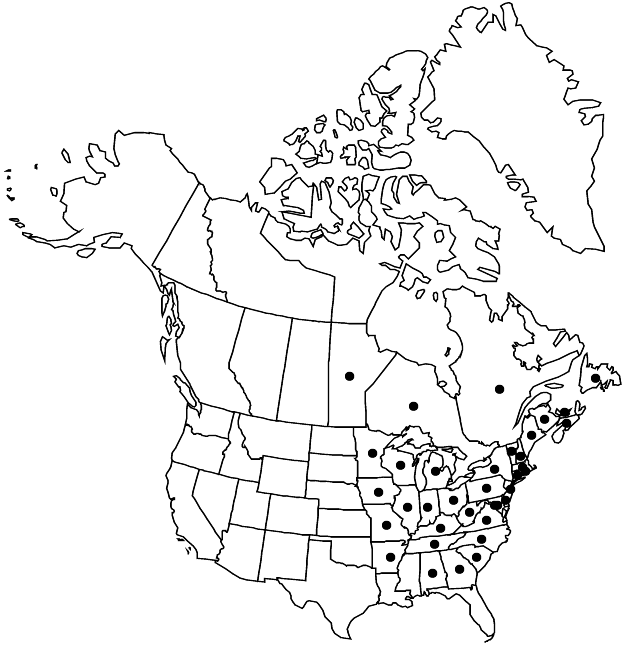Gaylussacia baccata
Dendrologie 2(1): 93. 1872 ,.
Plants 3–10 (–15) dm, forming small to extensive colonies; branches spreading; twigs of current season pale green, glabrous. Leaves: petiole 1–2 (–4) mm; blade pale green abaxially, green to yellowish green adaxially, ovate to oblong, (2–) 2.5–5 × 1–2.5 cm, membranous to subcoriaceous, base cuneate, margins entire, apex rounded to obtuse, surfaces glabrous, sometimes puberulent on major veins, sessile-glandular. Inflorescences drooping, 3–7-flowered, bracteate, 0.5–1.5 cm, glabrous; bracts early-deciduous, not leaflike (linear-lanceolate), 2–4 mm, shorter than pedicels, glabrous, sessile-glandular. Pedicels 3–6 mm, glabrous, sessile-glandular; bracteoles 1 (–2), 1–2 mm. Flowers: sepals 5, 0.7–1 mm, glabrous, sessile-glandular; petals 4–5, corolla orange to red, campanulate-conic, 4–5 mm, lobes 0.5–0.7 mm; filaments 2 mm, glabrous; anthers included, 2.2–2.5 mm, thecae divergent distally; ovary glabrous. Drupes juicy, sweet, glossy black (sometimes blue, rarely white), 6–7 mm diam., glabrous. Seeds ca. 2 mm. 2n = 24.
Phenology: Flowering late spring.
Habitat: Sandy or rocky soil in deciduous, pine, or mixed woods, roadsides, pastures, and utility rights-of-way, wet, acidic bogs, fens
Elevation: 0-800 m
Distribution

Man., N.B., Nfld. and Labr. (Nfld.), N.S., Ont., P.E.I., Que., Ala., Ark., Conn., Del., D.C., Ga., Ill., Ind., Iowa, Ky., Maine, Md., Mass., Mich., Minn., Mo., N.H., N.J., N.Y., N.C., Ohio, Pa., R.I., S.C., Tenn., Vt., Va., W.Va., Wis.
Discussion
Selected References
None.
Lower Taxa
"entire" is not a number."dm" is not declared as a valid unit of measurement for this property.